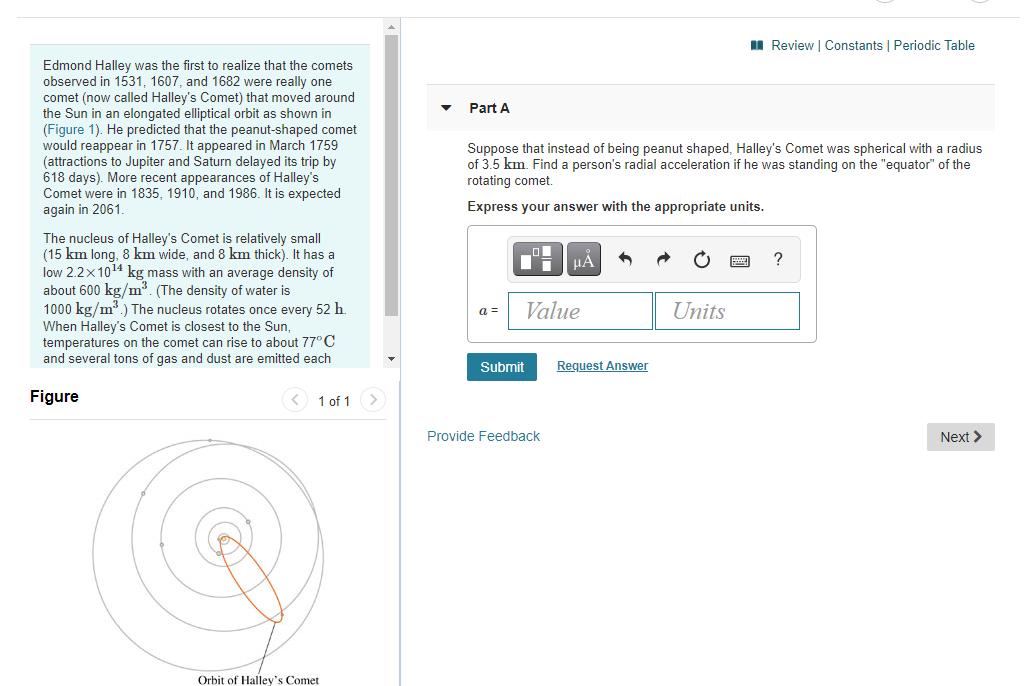Answered step by step
Verified Expert Solution
Question
1 Approved Answer
Review | Constants | Periodic Table Edmond Halley was the first to realize that the comets observed in 1531, 1607, and 1682 were really

Review | Constants | Periodic Table Edmond Halley was the first to realize that the comets observed in 1531, 1607, and 1682 were really one comet (now called Halley's Comet) that moved around the Sun in an elongated elliptical orbit as shown in (Figure 1). He predicted that the peanut-shaped comet would reappear in 1757. It appeared in March 1759 (attractions to Jupiter and Saturn delayed its trip by 618 days). More recent appearances of Halley's Comet were in 1835, 1910, and 1986. It is expected again in 2061. The nucleus of Halley's Comet is relatively small (15 km long, 8 km wide, and 8 km thick). It has a low 2.21014 kg mass with an average density of about 600 kg/m. (The density of water is 1000 kg/m) The nucleus rotates once every 52 h. When Halley's Comet is closest to the Sun, temperatures on the comet can rise to about 77C and several tons of gas and dust are emitted each Part A Suppose that instead of being peanut shaped, Halley's Comet was spherical with a radius of 3.5 km. Find a person's radial acceleration if he was standing on the "equator" of the rotating comet. Express your answer with the appropriate units. a = Value Units Submit Request Answer ? Figure Orbit of Halley's Comet 1 of 1 Provide Feedback Next >
Step by Step Solution
There are 3 Steps involved in it
Step: 1

Get Instant Access to Expert-Tailored Solutions
See step-by-step solutions with expert insights and AI powered tools for academic success
Step: 2

Step: 3

Ace Your Homework with AI
Get the answers you need in no time with our AI-driven, step-by-step assistance
Get Started


